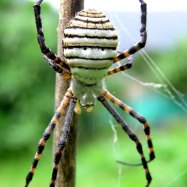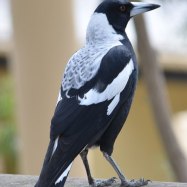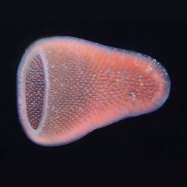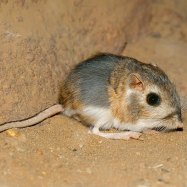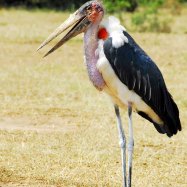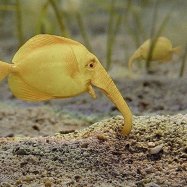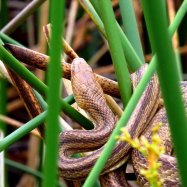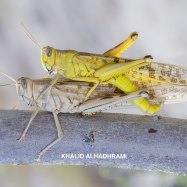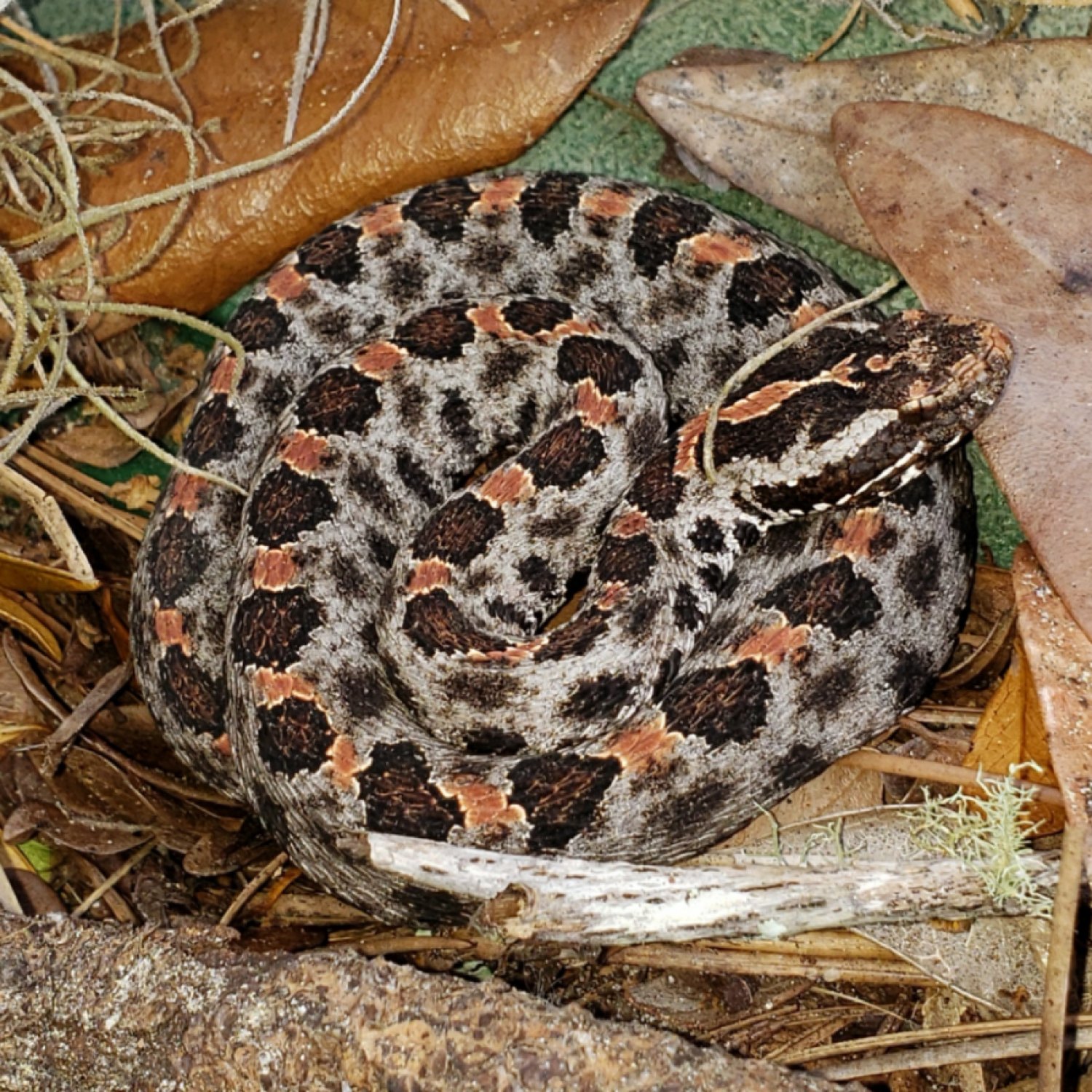
Pygmy Rattlesnake
Average length is around 20 to 30 inches
The Pygmy Rattlesnake, found in North America, is a small yet powerful snake that can grow up to 30 inches. Belonging to the Viperidae family, its stout body and short tail make it unique. Beware of its venomous bite, so always admire this creature from a safe distance. #PygmyRattlesnake #NorthAmerica
Animal Details Summary:
Common Name: Pygmy Rattlesnake
Kingdom: Animalia
Habitat: Forest edges, wetlands, grasslands
The Fascinating World of the Pygmy Rattlesnake
Nature has a way of surprising us with its diverse and intriguing creatures. From the African savannas to the depths of the ocean, there is no shortage of fascinating animals to discover. In this article, we will dive into the world of the Pygmy Rattlesnake – a small but mighty snake known for its unique features and behaviors.The Pygmy Rattlesnake, scientifically known as Sistrurus miliarius, is a species of venomous snake that belongs to the family Viperidae Pygmy Rattlesnake. With a common name that accurately reflects its size, this snake can be found in the southeastern region of the United States, specifically in states like Florida, Georgia, and Alabama. It is also known to inhabit areas of Mexico and the Caribbean.
Appearance and Coloration
Measuring an average length of 20 to 30 inches, the Pygmy Rattlesnake is considered a small snake, especially when compared to other members of its family. Its body is stout in shape, with a short tail and distinctive triangular head. Its scales are keeled, giving it a rough and textured appearance.The coloration of the Pygmy Rattlesnake is another interesting characteristic. Generally, they have a grey or light brown base color with darker blotches on their back. These blotches can range from brown to black and are often bordered by a lighter color. The underside of this snake is usually lighter in color, ranging from white to cream Pine Beetle. This unique coloration allows the snake to blend into its surroundings, making it well-camouflaged and difficult to spot by predators.
Habitat and Distribution
The Pygmy Rattlesnake is primarily found in forest edges, wetlands, and grasslands, making its home around areas with dense vegetation and moisture. This snake is also known to seek shelter in fallen logs, brush piles, and even man-made structures like barns and abandoned buildings.As mentioned earlier, the Pygmy Rattlesnake is mainly found in the southeastern United States, but it has also been recorded in parts of Mexico and the Caribbean. Its geographical distribution is quite vast, covering states like Florida, Georgia, Louisiana, and Alabama. It is safe to say that this snake has adapted well to different environments and has a wide range of habitats that it can survive in.
Feeding and Hunting Behavior
Being a carnivorous species, the Pygmy Rattlesnake preys on a wide variety of small animals. Its diet primarily consists of rodents like mice, rats, and voles, but it is also known to eat other reptiles, amphibians, and even birds. This snake is also an ambush predator, meaning it relies on its excellent camouflage to catch its unsuspecting prey.The Pygmy Rattlesnake has a unique hunting technique, known as "ambush foraging." It usually lies in wait for its prey to pass by and then strikes with lightning-fast speed, immobilizing its victim with its venomous bite. This efficient hunting method allows the snake to conserve energy and avoid any potential danger that may come with actively searching for food.
Body Shape and Defensive Mechanisms
Despite its small size, the Pygmy Rattlesnake is a formidable predator with several defense mechanisms to protect itself. Its stout and compact body allows the snake to move easily through dense vegetation and even swim through water. The short, thick tail also plays a vital role in the snake's defense.One of the most well-known features of this snake is its rattle, located at the end of its tail. When threatened, the snake flicks its tail, causing the rattle to make a distinct buzzing sound that serves as a warning to potential predators. If the predator does not heed this warning and continues to approach, the Pygmy Rattlesnake will not hesitate to strike and deliver a potent venomous bite.
Reproduction and Lifespan
The breeding season for the Pygmy Rattlesnake usually occurs in the spring and early summer. During this time, males will engage in combat with each other to attract females. Once the female has chosen a mate, they will engage in a courtship ritual, after which the male will leave, and the female will carry the eggs to full-term.Pygmy Rattlesnakes are ovoviviparous, meaning the eggs develop inside the female's body, and the young are born live. A typical litter consists of five to eight babies, measuring around six inches in length. Despite being born with venom, the young snakes are not capable of inflicting a severe bite until they are fully grown.
In terms of lifespan, the Pygmy Rattlesnake can live for an average of six to eight years in the wild, and up to ten years in captivity.
The Importance of the Pygmy Rattlesnake
Like every other animal, the Pygmy Rattlesnake plays a vital role in its ecosystem. As a predator, it helps keep the population of rodents in check, which in turn helps maintain a healthy balance in the environment. Plus, the snake's ability to live in various habitats makes it an important part of the food chain.This species also has cultural significance, with several Native American tribes incorporating the rattlesnake into their folklore and traditions. The Pygmy Rattlesnake is also a popular subject for herpetologists and wildlife enthusiasts, who study and appreciate its unique characteristics.
The Conservation Status of the Pygmy Rattlesnake
Like many other snake species, the Pygmy Rattlesnake faces some conservation concerns. One of the biggest threats to its population is habitat loss due to urbanization and deforestation. Additionally, they are often killed by humans due to fear or misunderstanding.Fortunately, these snakes are not currently listed as endangered or threatened. However, it is essential to continue to educate and raise awareness about the importance and value of this species to ensure its survival for future generations.
In Conclusion
The Pygmy Rattlesnake may be small in size, but it is undoubtedly a fascinating and unique animal. From its distinctive coloration and hunting behavior to its efficient defensive mechanisms, this snake has adapted well to its environment and is an important part of its ecosystem.Through understanding and appreciation, we can work towards preserving this species and creating a harmonious relationship between humans and wildlife. So the next time you spot a Pygmy Rattlesnake, remember to admire it from a safe distance and appreciate its place in the natural world.

Pygmy Rattlesnake
Animal Details Pygmy Rattlesnake - Scientific Name: Sistrurus miliarius
- Category: Animals P
- Scientific Name: Sistrurus miliarius
- Common Name: Pygmy Rattlesnake
- Kingdom: Animalia
- Phylum: Chordata
- Class: Reptilia
- Order: Squamata
- Family: Viperidae
- Habitat: Forest edges, wetlands, grasslands
- Feeding Method: Carnivorous
- Geographical Distribution: Southeastern United States
- Country of Origin: United States
- Location: North America
- Animal Coloration: Gray or light brown with dark colored blotches on the back. The belly is lighter in color.
- Body Shape: Small, stout snake with a short tail
- Length: Average length is around 20 to 30 inches
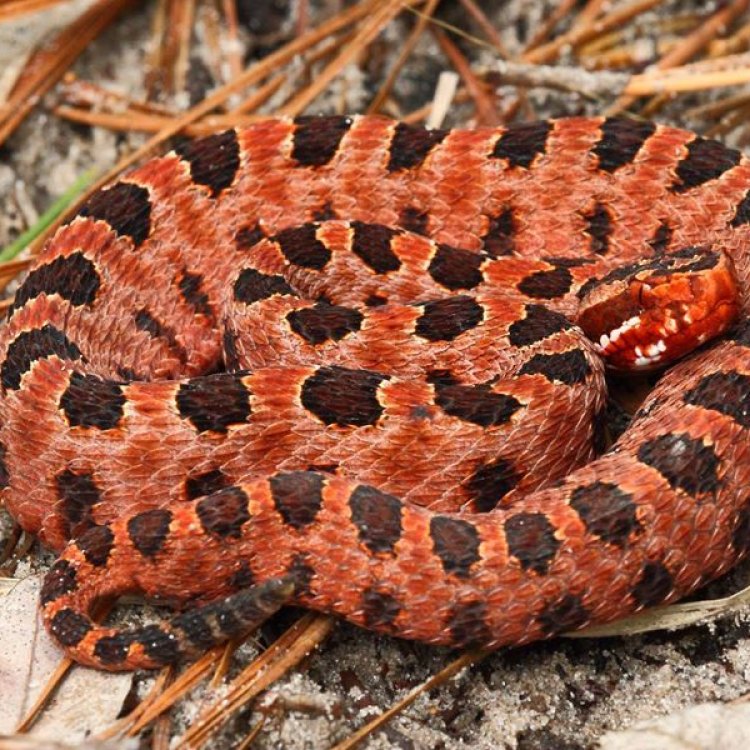
Pygmy Rattlesnake
- Adult Size: Adults can grow up to 24 inches
- Average Lifespan: 10 to 15 years
- Reproduction: Sexual
- Reproductive Behavior: Mating occurs in the spring and females give birth to live young
- Sound or Call: Can produce a buzzing sound by vibrating its tail
- Migration Pattern: Non-migratory
- Social Groups: Generally solitary
- Behavior: Nocturnal and secretive
- Threats: Habitat loss and degradation, road mortality, persecution, and collection for the pet trade
- Conservation Status: Least Concern
- Impact on Ecosystem: Helps control rodent populations
- Human Use: Not commonly used by humans, but some individuals may keep them as pets
- Distinctive Features: Has a small rattle that is rarely audible
- Interesting Facts: They are venomous but their venom is not considered life-threatening to humans. They are also known for their docile nature and reluctance to bite.
- Predator: Birds of prey, larger snakes, and mammals
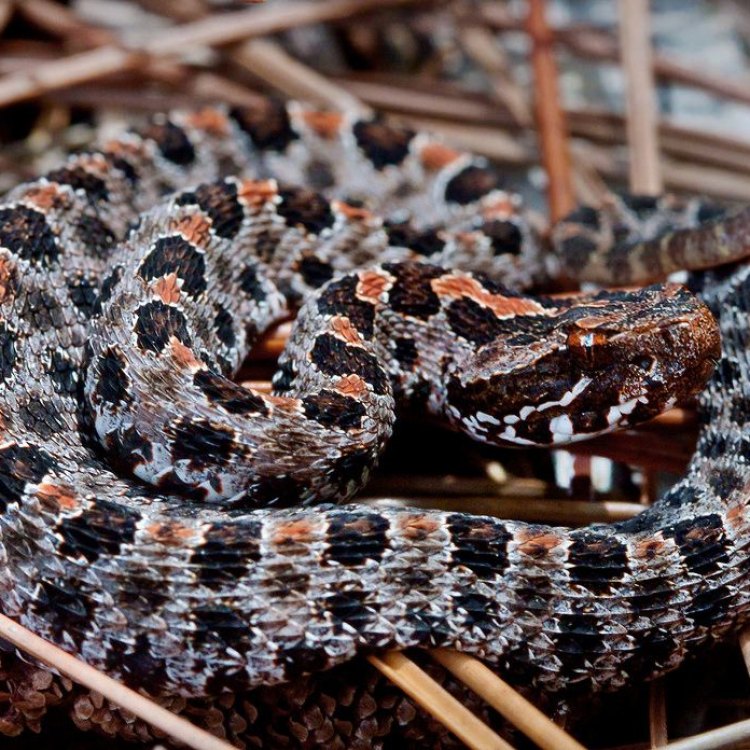
Sistrurus miliarius
The Secretive Serpent: Exploring the World of the Pygmy Rattlesnake
Hidden within the dense brush of forests and swamps, slithers a small but mighty predator - the Pygmy Rattlesnake. Despite its diminutive size, this elusive reptile possesses a unique set of characteristics that make it a complex and fascinating creature. From its reproductive behaviors to its impact on the ecosystem, let's dive deep into the world of the Pygmy Rattlesnake and discover what makes it stand out in the wild.Adult Size and Average Lifespan
Measuring in at a maximum of 24 inches, the Pygmy Rattlesnake is one of the smallest rattlesnake species in the world PeaceOfAnimals.Com. They are commonly found in the southeastern United States, primarily in Florida, Georgia, and the Carolinas. These snakes have a distinct coloration, with a grayish-brown background color and dark spots running down the length of their body.
The average lifespan of a Pygmy Rattlesnake is 10 to 15 years, making it a relatively long-lived snake compared to other species. However, their size also makes them vulnerable to predators, which leads to a high mortality rate in their first few years of life.
Reproduction and Mating Behavior
Like many other animals, Pygmy Rattlesnakes have a sexual reproductive behavior. During the spring, these snakes emerge from their winter hibernation and begin their search for a mate. Unlike some other snake species, Pygmy Rattlesnakes do not participate in complex courtship rituals. Instead, the male simply approaches the female and then coils around her, latching onto her with his jaws. This behavior is known as "mate guarding," and it can last for several days until the female is ready to mate Poochon.
Live Birth and Buzzing Sound
Once the female has mated, she will carry her eggs internally, giving birth to live young in late summer or early fall. Pygmy Rattlesnakes are ovoviviparous, meaning they retain the eggs inside their body until the offspring are ready to hatch. This reproductive strategy is thought to provide better protection for the developing young, as they are shielded from predators and harsh environmental conditions.
One of the most distinctive features of the Pygmy Rattlesnake is its small rattle. Unlike other rattlesnake species, the pygmy's rattle is rarely audible, producing a low-pitched buzzing sound instead. This unique adaptation is thought to be a result of their smaller size, as a larger rattle would require more energy to produce.
Nocturnal and Non-Migratory Behavior
Pygmy Rattlesnakes are primarily nocturnal, which means they are most active at night. During the day, they hide in dense vegetation, using their natural camouflage to blend in with their surroundings. This secretive behavior makes them challenging to spot for humans, but they play a crucial role in the ecosystem.
Unlike some other snake species, Pygmy Rattlesnakes are non-migratory, meaning they do not travel long distances in search of food or better living conditions. They are known to occupy a specific territory and rarely venture beyond its borders, making them well-adapted to their surroundings.
Social Groups and Food Habits
These snakes are generally solitary creatures, although they may be found in small groups during the mating season. Pygmy Rattlesnakes are also opportunistic hunters, meaning they will eat any prey they can overpower, including rodents, birds, lizards, and even other snakes. They use a venomous bite to immobilize their prey, and then swallow it whole.
Threats to Survival and Conservation Status
Like many other snake species, the Pygmy Rattlesnake faces several threats to its survival. Habitat loss and degradation, road mortality, persecution, and collection for the pet trade are some of the primary factors endangering its population. However, due to its widespread distribution and stable population, the International Union for Conservation of Nature (IUCN) has classified the Pygmy Rattlesnake as a species of Least Concern.
Impact on the Ecosystem and Human Use
Despite their small size, Pygmy Rattlesnakes play a crucial role in balancing the ecosystem. As ambush predators, they help control rodent populations, which can have a significant impact on the environment if not kept in check. These snakes also serve as prey for birds of prey, larger snakes, and mammals, contributing to the overall biodiversity in their habitats.
While the Pygmy Rattlesnake is not commonly used by humans, some individuals may keep them as pets. However, this practice is not recommended, as these snakes require specific care and can be dangerous if mishandled.
Interesting Facts About the Pygmy Rattlesnake
Apart from its unique features and behaviors, the Pygmy Rattlesnake has a few interesting facts that make it a truly remarkable creature. Despite being venomous, their venom is not considered life-threatening to humans and is primarily used to subdue their prey. These snakes are also known for their docile nature and reluctance to bite, which makes them less likely to attack unless provoked.
In Conclusion
The Pygmy Rattlesnake may be small in size, but it is a complex and fascinating creature with a remarkable set of traits and behaviors. From its reproductive strategies to its impact on the ecosystem, this snake has evolved to thrive in its natural habitat. However, it is essential to remember that these snakes are wild animals and should be admired and respected from a safe distance. Let us appreciate and protect these secretive serpents as they continue to play an essential role in the delicate balance of nature.
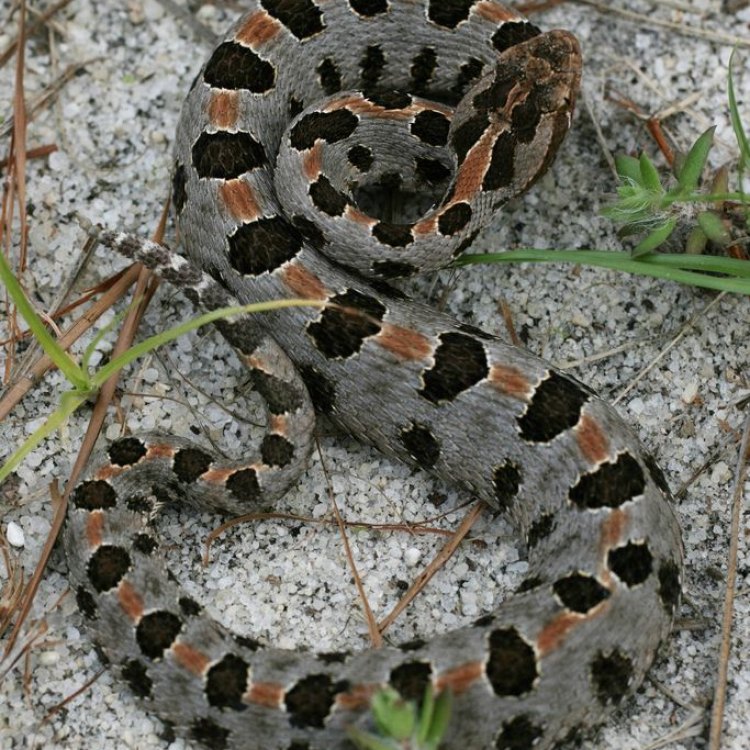
The Fascinating World of the Pygmy Rattlesnake
Disclaimer: The content provided is for informational purposes only. We cannot guarantee the accuracy of the information on this page 100%. All information provided here may change without prior notice.


